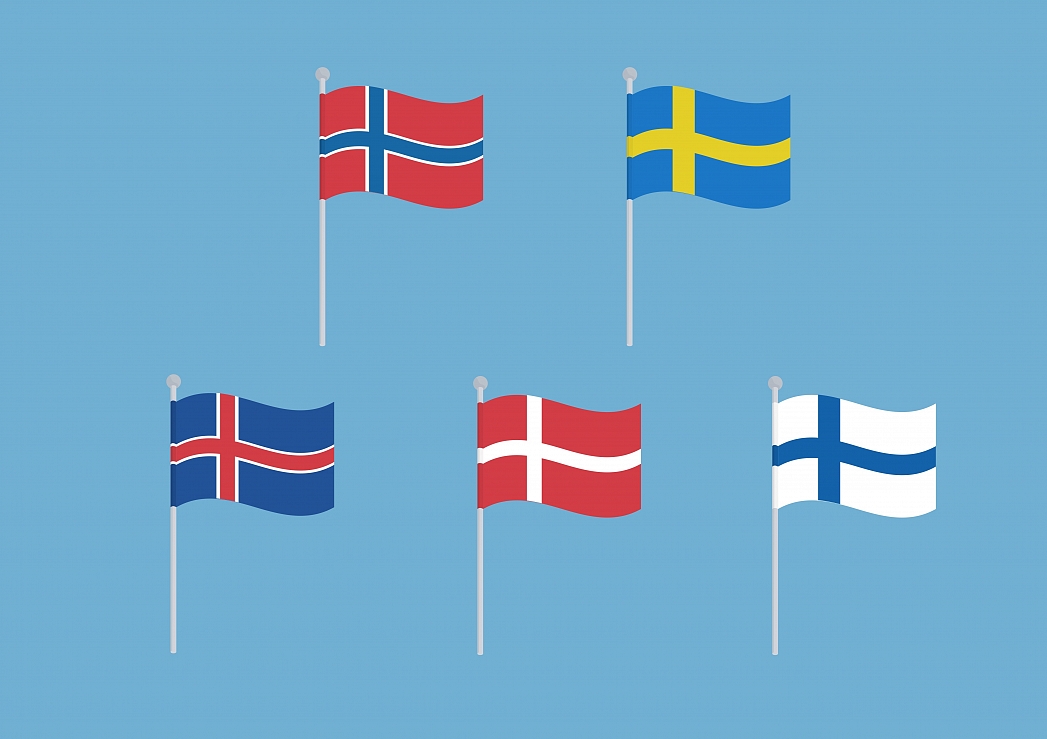What Are the Nordic Countries?
The Nordic countries refer to a group of five countries: Denmark, Sweden, Finland, Norway, and Iceland.

The Nordic countries refer to a group of five countries and territories in the North of Europe and the Atlantic. These countries are Denmark, Sweden, Finland, Norway, and Iceland while the territories are the Faroe Islands, Greenland, Svalbard, and the Aland Islands. The word Nordic originates from the word Norden (from Scandinavian languages), which translates to “the North.”
Scandinavia is often confused as being a part of the Nordic countries. However, Scandinavia is not a country but a peninsula in the region. Together with Finland, the two make up the combined peninsula of Fennoscandia. Scandinavia is home to three of the Nordic countries namely Denmark, Sweden, and Norway. In total, the five countries have an area of about 1,322,710 square miles and a population of around 27,056,092 people. The biggest part of the population (about 75%) is made up of Scandinavians with the Finns coming in second.
Demographics
Currently, the countries have a combined population of a little over 27 million people compared to the 12 million at the start of the 20th century. Despite this increase, these countries have some of the lowest global population densities. Due to limitations on settlement places by nature, most of the people in the countries live close to the capital cities. In the case of Iceland, at least 60% of the population resides close to Reykjavik, which is the capital city. In the remaining four countries, at least 20% of the population lives close to an urban area.
The languages spoken in these countries fall into three broad categories namely North Germanic, Eskimo–Aleut, and Finno-Ugric languages. Despite these three families, the Nordic region has a similar heritage when it comes to linguistics, which is also one of the things that foster unity among the countries. Examples of languages belonging to the North Germanic group of languages include Danish, Swedish, Norwegian, Icelandic, and Faroese. Despite their differences, it is possible for people speaking different languages to understand one another. Aside from the commonalities in speech, some Nordic countries make it mandatory for other languages to be taught in school. For example, Finland has made it mandatory for its schools to teach Swedish.
Culture
The Nordic nations are widely known in the world for their progressive culture. This culture is similar among the countries, which is another reason why there is unity among them. The importance placed on culture can be seen at the government expenditure towards preserving the customs. For example, in 2011, Iceland spent about 3.3% (the highest expenditure) of its gross domestic product (GDP) on culture while Denmark spent 1.1% of its GDP. On a larger scale, the countries established the Nordic Culture Fund back in 1966 to promote cultural cooperation.
Similar Flag
Interestingly, all the countries and territories have flags that are more or less similar. Based on the Danish flag (the Dannebrog), all the flags have a cross that is off the center with the intersection closer to the hoisting side of the flag. Even though the flags of Greenland and Sapmi do not have the cross, they have a circle that is off the center just like the Nordic Cross in the other flags.
What Are the Nordic Countries?| Rank | Nordic Countries |
|---|---|
| 1 | Denmark |
| 2 | Finland |
| 3 | Iceland |
| 4 | Norway |
| 5 | Sweden |
More on Graphicmaps

Published on 2019-11-06
What is a Trade Embargo?

Published on 2019-11-04
Which Two Countries Used to Have the Same Flag?

Published on 2019-09-16
What Is the Only Two-Sided State Flag?

Published on 2019-09-16
Which Country Flag Looks Like the Texas Flag?

Published on 2019-08-29
Flags That Resemble the US Flag

Published on 2019-08-20